FOOD FOR DECOMPOSERS
Woody Home, Dung!, Manure Enriches the Soil, Mold, Keeping Healthy, In a Compost Bin, House Rot
If you see a rotten log in the park, look close. It may be dead, but it may also be teeming with life. Decaying logs or even fallen trees make excellent habitats for mammals, birds, and even fish (if the log or tree falls in the water). As the dead tree breaks into pieces, its nutrients soak back into the soil. This creates healthy soil that will help new trees grow.
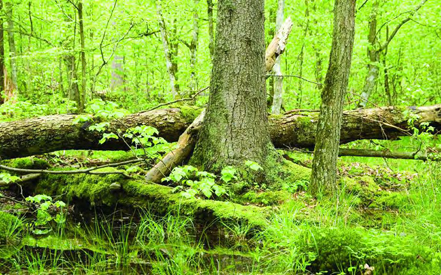 An army of decomposers work day and night. They clear the forest of fallen leaves, dead wood, and dead animals.
An army of decomposers work day and night. They clear the forest of fallen leaves, dead wood, and dead animals.
Woody Home
Fallen trees or dead wood provide homes to many animals. Hawks perch high above in lofty leafless perches. From there, they keep a beady eye out for anything that moves. Farther down, the hollows of dead or diseased trees make great nesting spots for owls, squirrels, and other small animals. And, down below, rotting trunks or logs make great homes for smaller animals, like frogs.
Rotting wood is a good source of food, too. Insects and small creatures such as slugs and snails will feed on it. Soon birds will be pecking at the wood, feeding on the insects inside. Fungi and bacteria eat their droppings. Before long, the wood will crumble away.
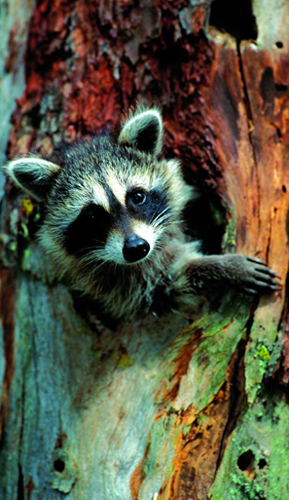 A hollow, dead tree is a perfect hideaway for this young raccoon.
A hollow, dead tree is a perfect hideaway for this young raccoon.
Dung!
Many decomposers eat waste matter, called dung, made by other animals. For example, the dung fly lives and breeds in cow dung. Animal dung is actually full of goodness. Even decomposers’ waste matter rots into the soil.
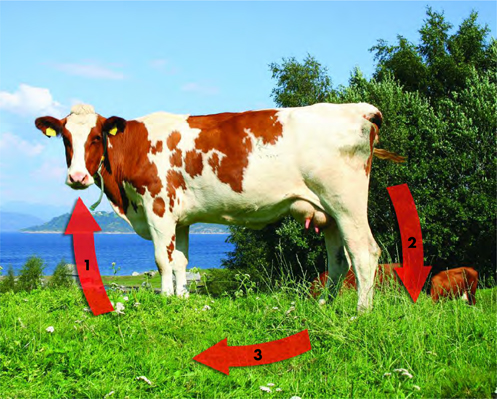 1. A cow eats grass.
1. A cow eats grass.
2. A cow makes waste (called dung or manure).
3. The nutrients in the manure make the grass grow well.
Manure Enriches the Soil
Soil is a mixture of tiny bits of rock and natural waste. Farmers sometimes add waste from their animals, called manure, to the soil. Manure is packed with nutrients that enrich the soil. A soil rich in nutrients helps the growth of healthy crops.
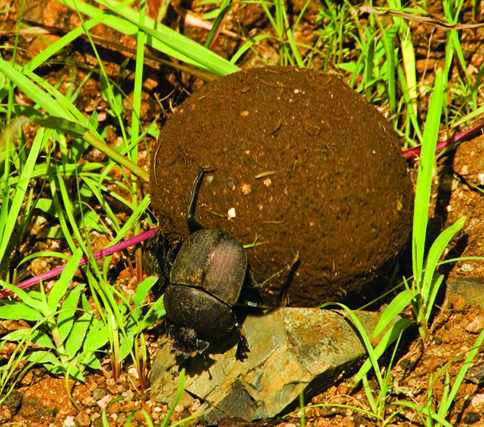 This dung beetle rolls a large ball of dung. It buries the ball and then lays eggs in it. When the eggs hatch, the young beetles eat the dung.
This dung beetle rolls a large ball of dung. It buries the ball and then lays eggs in it. When the eggs hatch, the young beetles eat the dung.
Cows make a lot of manure! In Australia, cows were making about 331,000 tons (300,000 tonnes) of cow dung every day. This attracted thousands of flies. Finally, scientists introduced the dung beetle to the country. The beetles ate away mounds of manure.
 MANURE AS FUEL. Pig manure can be turned into oil! To do this, the smelly waste is heated to high temperatures. This turns it into a liquid that can be used as a fuel.
MANURE AS FUEL. Pig manure can be turned into oil! To do this, the smelly waste is heated to high temperatures. This turns it into a liquid that can be used as a fuel.
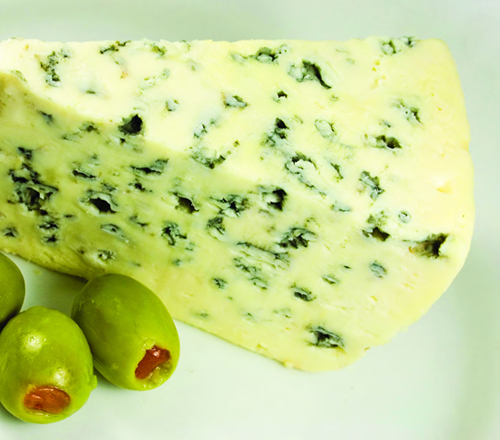 This cheese is moldy, but it is perfectly safe to eat. The blue marks are mold, grown from a fungus. But watch out, many fungi are poisonous.
This cheese is moldy, but it is perfectly safe to eat. The blue marks are mold, grown from a fungus. But watch out, many fungi are poisonous.
Fresh food does not last. If you leave a pear for too long, it goes soft. Soon mold may grow.
Mold
Mold is a type of fungus. It can be white, blue, green, yellow, pink, red, or black. Most molds that grow on foods such as bread, cheese, fruit, and vegetables can contain poisons. Some blue veined cheeses are made with a mold that is safe to eat.
 WHAT A STINKER! The rafflesia plant stinks like rotting flesh! This smell attracts flies. They land in the huge plant. When they fly on, they help spread the plant's seeds.
WHAT A STINKER! The rafflesia plant stinks like rotting flesh! This smell attracts flies. They land in the huge plant. When they fly on, they help spread the plant's seeds.
Keeping Healthy
You can often smell rotten food or see that it is “spoiled.” Decaying food changes color and can smell unpleasant. It is important not to eat food that has spoiled. It can make you sick.
If you are sick, the doctor may give you medicine to make you better. Some medicines are made from molds. These molds kill off the bacteria that are making you sick.
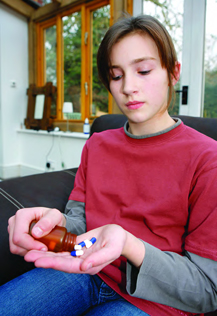 Medicines such as penicillin and other antibiotics are made from fungi. They attack the unfriendly bacteria that cause illness.
Medicines such as penicillin and other antibiotics are made from fungi. They attack the unfriendly bacteria that cause illness.
In a Compost Bin
Instead of throwing apple cores or carrot tops into the trash, throw them in a compost bin. Composting is a way of reusing garden or kitchen waste. In a compost bin, the waste decomposes quickly, and nutrients go back into the soil.
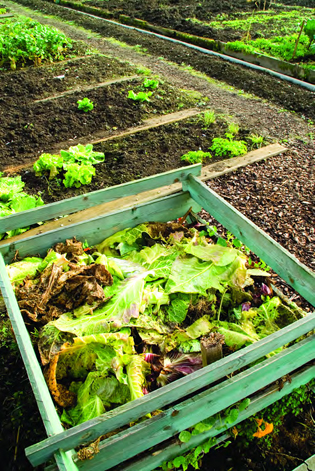 Scraps of uncooked food soon decompose in a compost bin. This makes a rich, moist soil to help new plants grow.
Scraps of uncooked food soon decompose in a compost bin. This makes a rich, moist soil to help new plants grow.
 DECOMPOSITION. In order to decompose quickly, potato peelings need: Moisture, Oxygen, Warmth, A few decomposers such as slugs and beetles
DECOMPOSITION. In order to decompose quickly, potato peelings need: Moisture, Oxygen, Warmth, A few decomposers such as slugs and beetles
 LOTS OF BANANA SKINS. One person throws away 428 pounds (194 kilograms) of natural waste each year. That's as much as 2,800 banana skins.
LOTS OF BANANA SKINS. One person throws away 428 pounds (194 kilograms) of natural waste each year. That's as much as 2,800 banana skins.
When you throw an apple core into a compost bin…
1. Tiny organisms eat away at the apple core.
2. This creates heat and encourages other decomposers to grow.
3. As the compost cools down, fungi starts to work.
4. In about nine months, the apple core has disappeared.
5. Nutrients from the core have soaked back into the soil.
6. New plants will use these nutrients to grow.
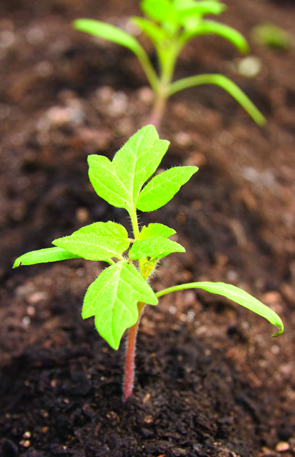 The process of decomposition provides life for young plants. As nutrients from dead plants soak into the soil, new plants take them up.
The process of decomposition provides life for young plants. As nutrients from dead plants soak into the soil, new plants take them up.
You can see that rot and decay help keep nature in balance, but they can also cause damage.
House Rot
Mold can grow inside damp houses. This kind of mold can ruin carpets and furniture. Another harmful growth is dry rot. Dry rot eats away at wood until it crumbles.
Unhealthy Germs
Some bacteria are friendly. Friendly ones are found in foods such as yogurt. We also have plenty of friendly bacteria living in our bodies. But not all bacteria are friendly. Unfriendly bacteria are sometimes called germs. They can cause sickness in humans. That is why you must wash your hands after touching the soil.
The Good and Bad
Some fungi are poisonous. They can kill living trees. They are also a main cause of crop destruction. Some fungi attack certain crops of potatoes. During the nineteenth century, a fungus, known as potato blight, destroyed the main Irish crop. This led to a terrible shortage of food. Many people starved.
(Opposite) Friendly bacteria live in some yogurts. They help keep you healthy by fighting unfriendly bacteria that cause ill health.
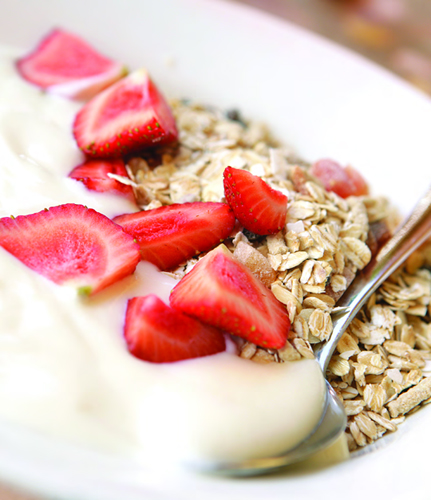
Additional topics
- RECYCLE - Dung Power, Why Recycle?, Using Energy, Waste and Need, What's Recycled?, Dangerous Garbage
- THE DECOMPOSERS - Tidying Up, Tiny Decomposers, Burying Beetles, Bacteria, Fungi
- Other Free Encyclopedias